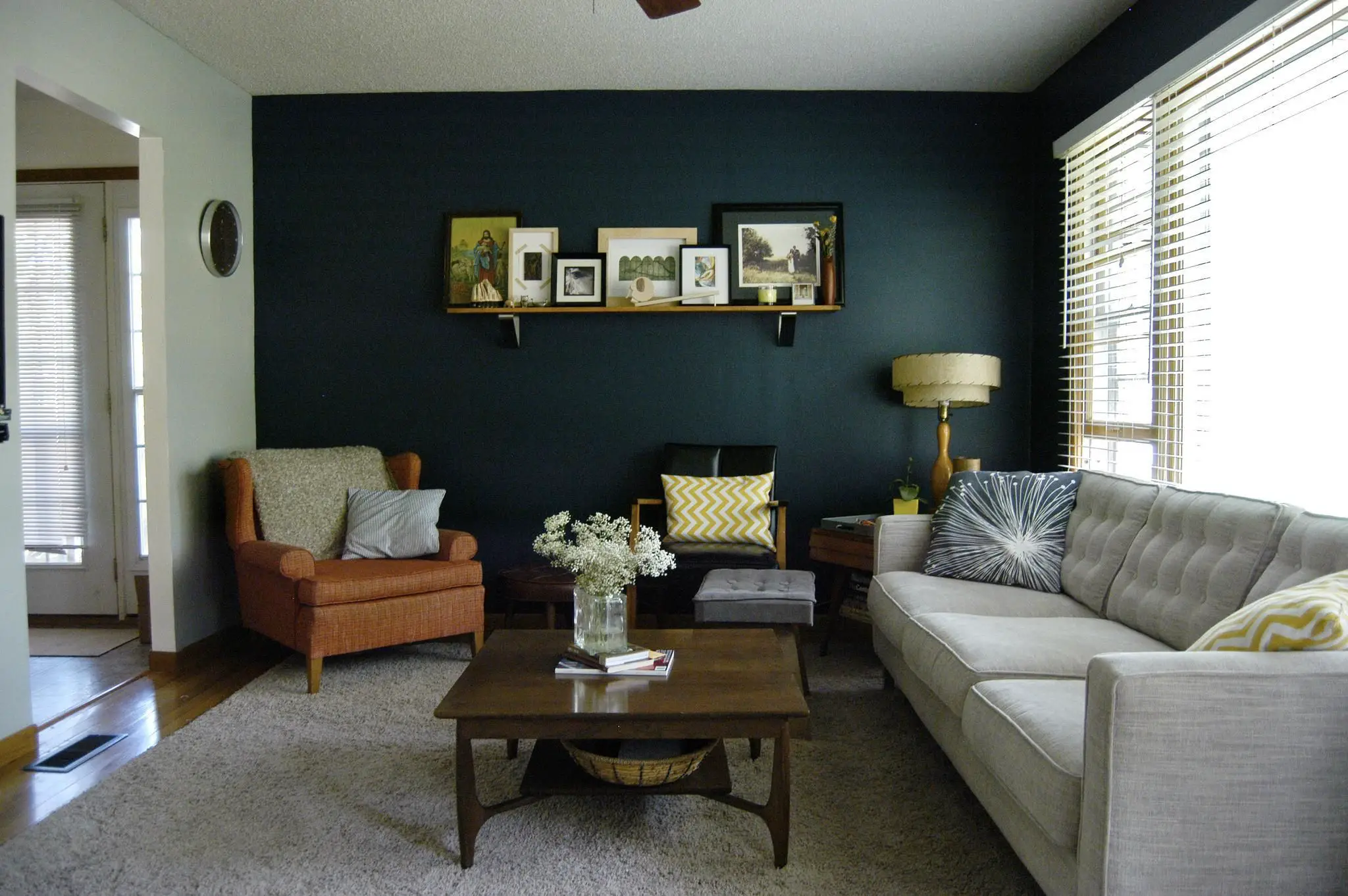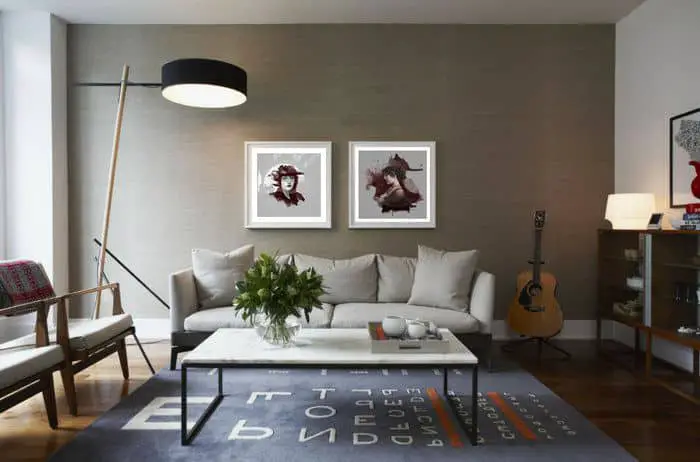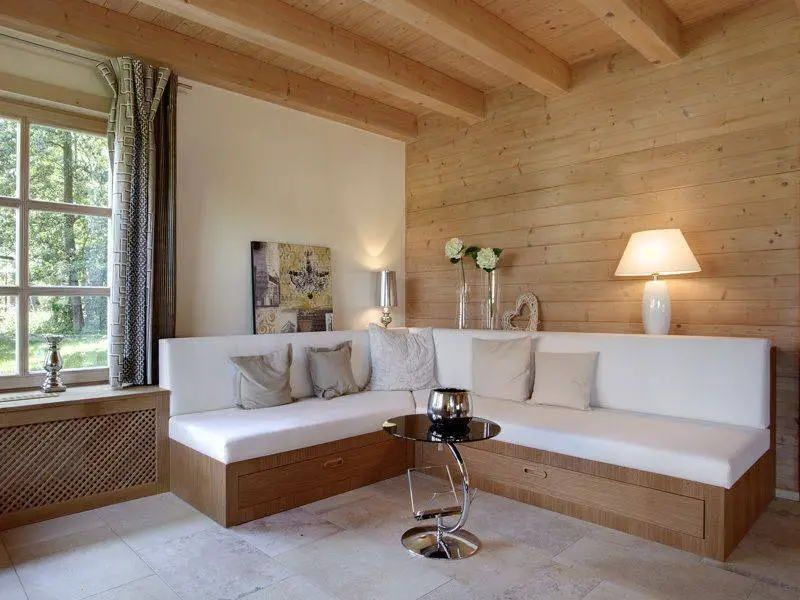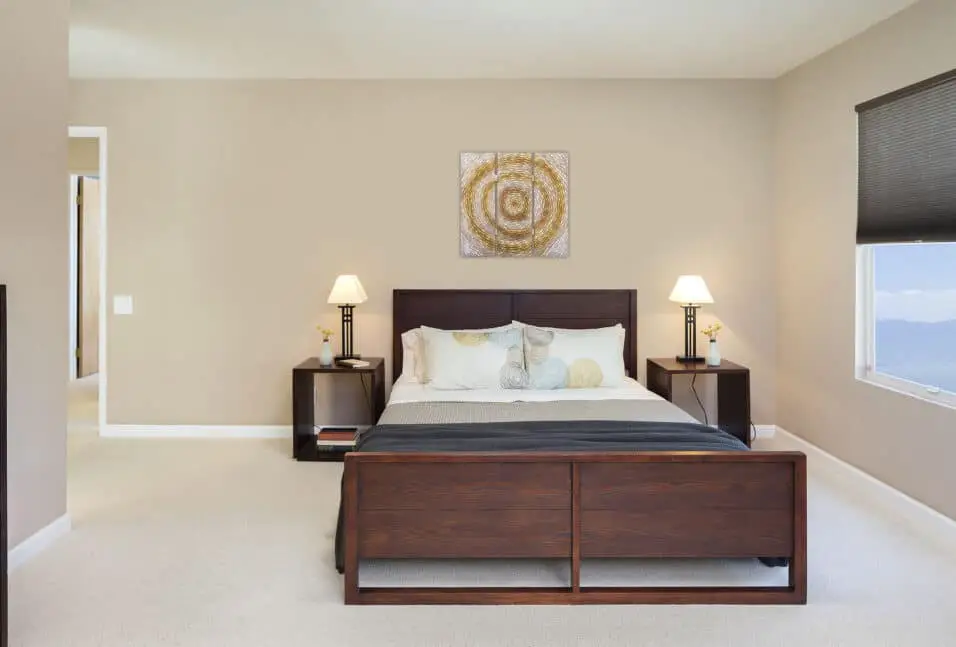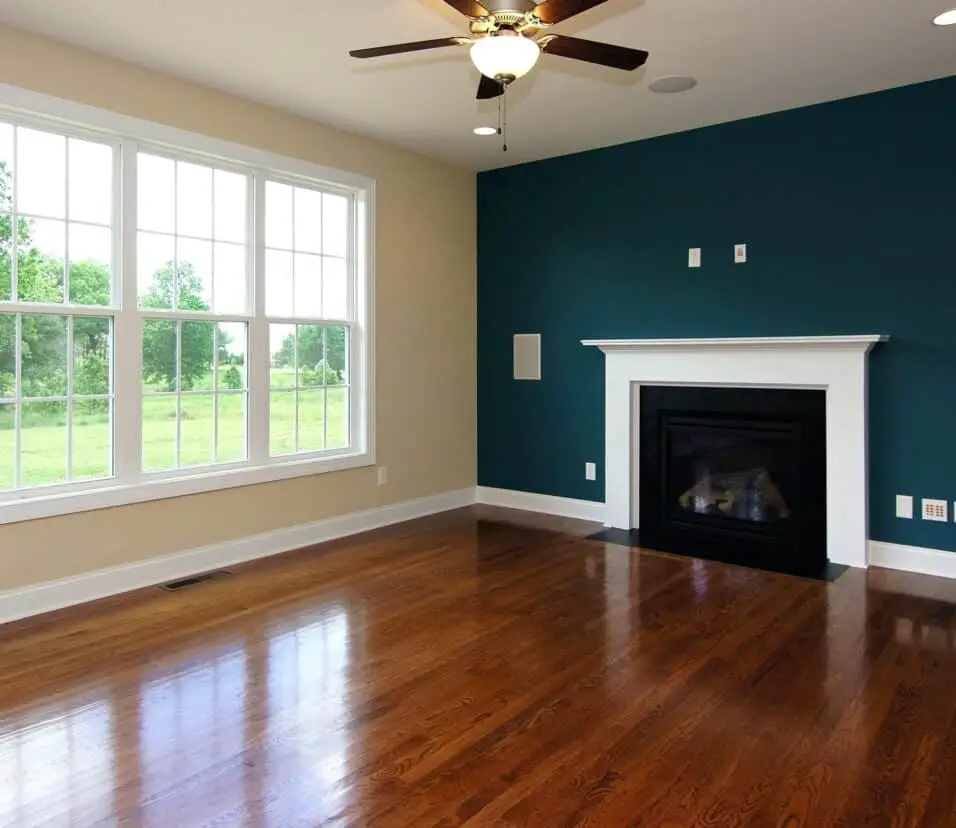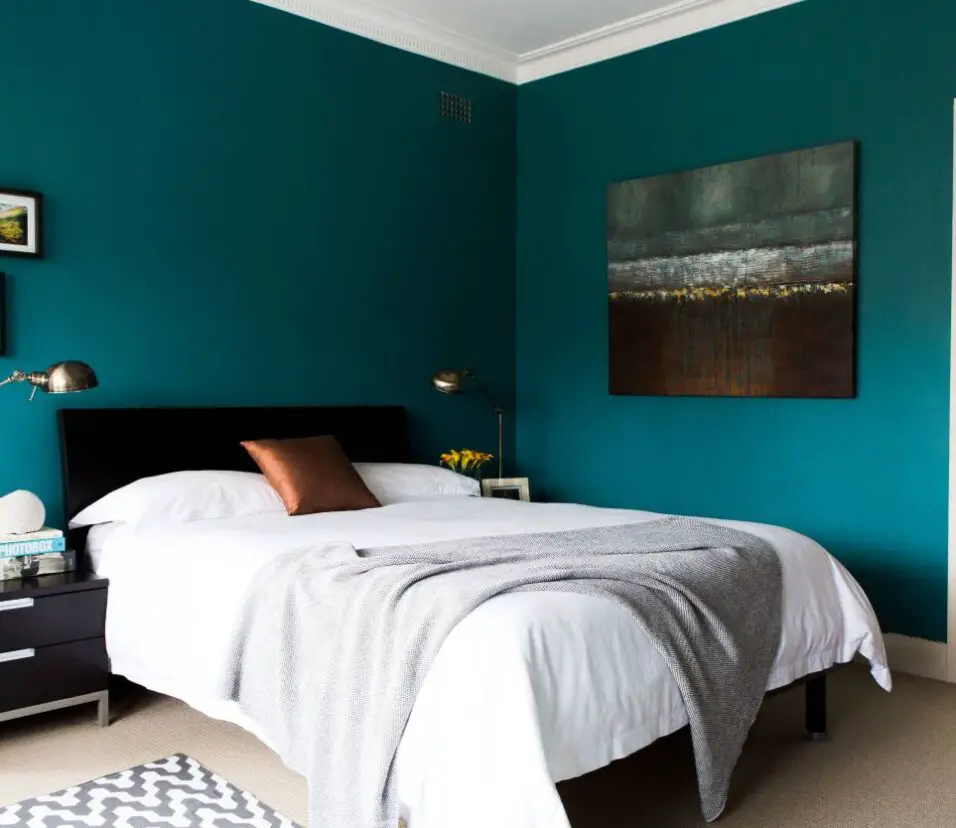Which Wall To Paint As Accent Wall
Introduction
Which Wall To Paint As Accent Wall: Choosing the perfect accent wall can be a daunting task when it comes to transforming the ambiance and aesthetics of a room. The decision to paint an accent wall is an interior design choice that holds the power to breathe life into your living spaces, adding depth, character, and personality to your home. However, the question that often arises is, “Which wall to paint as an accent wall?” This seemingly simple decision can have a significant impact on the overall look and feel of your space.
In this guide, we will delve into the art and science of selecting the ideal accent wall for your interior design project. We’ll explore various factors that should influence your decision, such as room size, layout, lighting, color theory, and the desired atmosphere you wish to create. Whether you’re aiming to make a bold statement, create a cozy atmosphere, or simply highlight a unique architectural feature, we will provide you with expert insights and practical tips to help you make an informed and inspired choice.
By the end of this guide, you’ll be equipped with the knowledge and confidence to determine which wall to paint as your accent wall, allowing you to embark on a creative journey that will redefine the style and charm of your living spaces. So, let’s dive in and discover the transformative power of the accent wall in interior design.
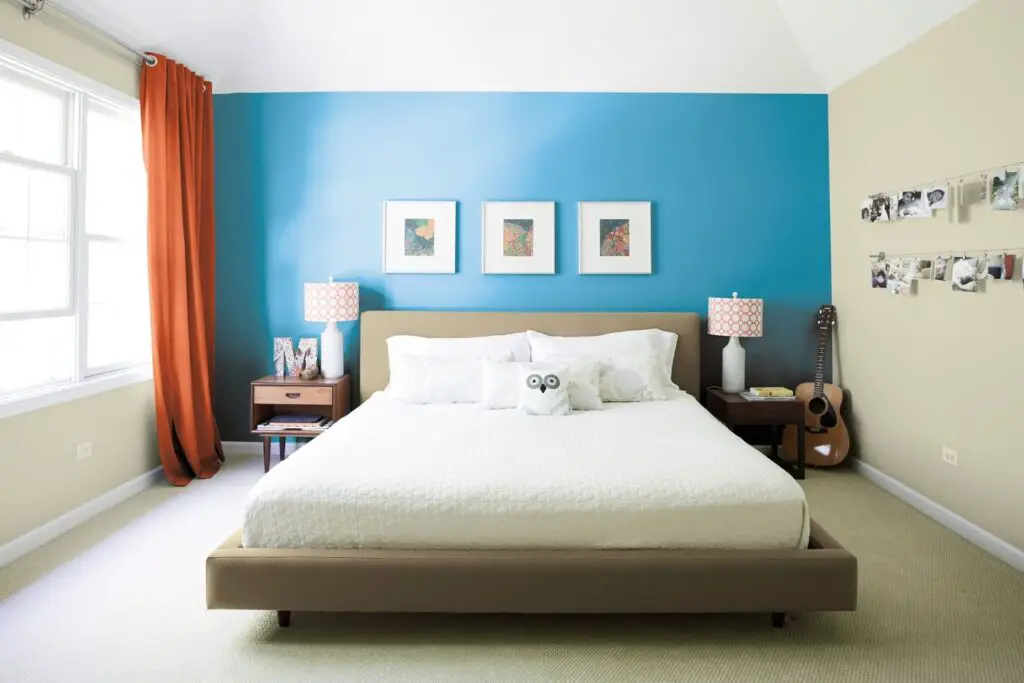
Do you remove trim for shiplap?
Prepare Walls
The first step in your diy shiplap accent wall: remove everything. Take everything off the wall, including any nails. Use a putty knife to gently pry off and remove baseboards, crown molding and trim. Remove wall plates and outlet covers.
When embarking on a shiplap installation project, it’s typically advisable to remove any existing trim, such as baseboards or crown molding, from the wall where you intend to install the shiplap. This step ensures a cleaner, more seamless appearance for your shiplap wall. Removing the trim allows the shiplap boards to sit flush against the wall surface, creating a cohesive and visually pleasing result.
By taking the time to remove the trim, you also ensure that the shiplap boards fit snugly against the wall, minimizing any unsightly gaps between the boards and the trim. This step is crucial for achieving a professional and polished finish for your shiplap installation. Once the shiplap is securely in place, you can either reinstall the original trim or opt for new trim that complements the shiplap design, framing the wall beautifully and completing the overall look.
How do you hide gaps in shiplap?
Fill Shiplap Seams With Caulk
To create a seamless look, you’ll want to make sure any gaps and edges are filled in with caulk, just like you would fill in nail holes with wood filler when affixing shiplap. Caulking the edges will create clean lines and a finished look.
Hiding gaps in shiplap is a crucial step in achieving a seamless and finished look for your shiplap wall. There are several methods to accomplish this:
Wood Filler or Caulk: After installing the shiplap boards, inspect the gaps between them. If you notice any visible gaps, use a paintable wood filler or paintable caulk to fill them in. Apply the filler or caulk into the gaps, smooth it out, and allow it to dry. Once dried, sand the filled areas to create a smooth and even surface. This method is effective for small to moderate-sized gaps.
Wider Shiplap Boards: If you’re concerned about significant gaps between shiplap boards, consider using wider shiplap boards. Wider boards naturally cover more wall surface, reducing the chances of noticeable gaps.
Backer Rod: For larger gaps, you can use backer rod before applying caulk. Backer rod is a foam cylindrical material that is inserted into gaps to provide support for the caulk. Once the backer rod is in place, you can apply caulk over it to create a tight seal.
Paint Over Gaps: In some cases, you can strategically paint the gaps to match the color of the shiplap, camouflaging them effectively. However, this method is best suited for minor gaps.
Hiding gaps in shiplap requires attention to detail and patience, but it’s essential for achieving a flawless and professional finish.
Do you frame a shiplap wall?
But if the pattern is a little complex like mine, you have two options. One is to use a construction adhesive and directly stick it to the wall by temporarily securing it with nails. Second, is to run wood framing that is screwed to the wall studs and shiplap boards are mounted on top of these framing.
Framing a shiplap wall is not a strict requirement, but it can enhance the overall look and provide a more finished appearance. The decision to frame a shiplap wall depends on your design preferences and the specific aesthetic you want to achieve.
Shiplap boards are typically installed directly onto the wall studs using nails or screws. The boards themselves serve as both decorative and structural elements, covering the wall’s surface while adding texture and visual interest. However, if you desire a more defined and polished look, framing the shiplap wall can be an excellent choice.
To frame a shiplap wall, you can add trim or molding around the edges of the shiplap installation. This additional trim serves to create a clear border between the shiplap and the surrounding wall, providing a sense of structure and refinement. Common choices for framing include chair rails, baseboards, or crown molding, depending on your design preferences.
In summary, framing a shiplap wall is an optional step that adds a finishing touch and a sense of completeness to your shiplap installation. It allows you to customize the look of your shiplap wall to match your interior design style.
How do you make shiplap look modern?
How do you make shiplap look modern? To make the shiplap look modern, you want to keep the spaces in between uniform. When you use shiplap, a clean installation is what makes it look contemporary rather than country. Use a nickel as a spacer between boards to give it a very uniform, modern look.
To give shiplap a modern and contemporary appearance, you can employ various design techniques and choices:
Paint Selection: Opt for a clean, neutral paint color that complements your modern aesthetic. White and light gray are popular choices, but you can also consider muted pastels or soft earthy tones for a more subtle look.
Vertical Installation: While horizontal shiplap is traditional, installing the boards vertically can create a unique and modern twist. Vertical lines can elongate the walls and draw the eye upward, making the room appear taller.
Wider Shiplap Boards: Choose wider shiplap boards for a bolder and more modern statement. Wider boards can create a stronger visual impact and a sense of contemporary sophistication.
Minimalist Decor: Keep the decor and furnishings in the room sleek and minimalistic. Modern design often emphasizes clean lines, uncluttered spaces, and a sense of simplicity. Avoid overly ornate or traditional pieces.
Monochromatic Palette: Stick to a monochromatic color palette for the entire room, including furniture and decor. This creates a cohesive and streamlined look that is characteristic of modern design.
Lighting: Incorporate modern lighting fixtures that align with your design theme. Pendant lights, recessed lighting, or sleek track lighting can all contribute to a modern ambiance.
Texture Contrast: Introduce contrasting textures in the room to add depth and interest. For example, pair smooth shiplap with rough-textured rugs or textiles to create visual intrigue.
Avoid Distressing: While distressed shiplap can have a rustic charm, for a modern look, it’s best to choose shiplap boards without heavy distressing or knots. Smooth and pristine surfaces align more with contemporary aesthetics.
By implementing these design strategies, you can transform your shiplap wall into a modern and visually striking focal point that complements your overall interior design theme. Remember that the key to modern design is simplicity, minimalism, and a focus on clean lines and harmonious spaces.
What goes first trim or shiplap?
Follow the correct order of operations. What is this? Install your faux shiplap before anything else in the room – meaning baseboard, crown, and trim. Unfortunately I made the mistake of installing my trim before my shiplap, so I had to notch my shiplap pieces with a jigsaw to make them fit around my windows and doors.
The order of installation between trim and shiplap depends on your design preferences and the desired end result. Generally, shiplap is installed before trim. Here’s why:
Shiplap Installation: Shiplap boards are typically installed directly onto the wall surface, covering the entire area where you want the shiplap. They are secured to the wall studs using nails or screws. This installation method ensures that the shiplap boards sit flush against the wall, creating a uniform and cohesive appearance.
Trim Installation: After the shiplap is securely in place, you can then install the trim. Trim, which includes baseboards, crown molding, or chair rails, is added around the edges of the shiplap wall to frame and finish the look. Installing trim after shiplap allows the trim to cover any exposed edges of the shiplap, providing a polished and seamless transition from the shiplap to the rest of the room.
However, if you have existing trim that you want to keep and it’s compatible with your shiplap design, you can install shiplap up to the trim’s edge. In this case, you may need to make precise cuts to fit the shiplap boards around the trim for a neat finish.
Do you paint edges of shiplap?
Finish shiplap wall edges with caulk, primer and or paint
Before you get to the best part (rolling), there are two more important steps! The edges of the shiplap wall need to be caulked (with paintable caulk) wherever there is molding and then they need to be “cut in” with the paint brush.
Yes, it’s essential to paint the edges of shiplap boards to achieve a finished and professional look. When painting shiplap, many people focus on painting the front face of the boards, but neglecting the edges can result in an unfinished appearance.
To ensure a cohesive and polished finish, follow these steps when painting shiplap:
Front Face: Begin by painting the front face of each shiplap board with your chosen paint color. Apply even coats and allow them to dry thoroughly between coats.
Edges: After painting the front face, paint the top and bottom edges of each shiplap board. This step is crucial because it prevents any exposed raw wood edges from showing once the shiplap is installed. Make sure the edges are evenly coated with paint to achieve a uniform appearance.
Final Touches: Once the paint is dry, you can proceed with installing the shiplap boards. Be careful not to scratch or chip the painted edges during installation. After installation, inspect the edges to ensure they are fully covered with paint, and touch up any areas as needed for a seamless finish.
By painting the edges of shiplap boards, you create a consistent and polished look for your shiplap wall, and it helps protect the wood from moisture and wear over time.
How can I make my shiplap look better?
Keep Spacing Uniform
“When you use shiplap, clean installation is what makes it look contemporary rather than country,” says Nashville-based interior designer Jason Arnold. “Use a nickel as a spacer between boards to give it a very uniform, modern look.”
To enhance the appearance of your shiplap and make it look better, consider the following tips:
Choose the Right Paint
Select a paint color and finish that aligns with your design vision. Common choices include white, soft gray, or other neutral tones in a matte or satin finish for a classic look. However, you can also experiment with bolder colors or unique finishes for a more personalized touch.
Ensure Even Spacing
When installing shiplap boards, maintain consistent spacing between them. Uneven spacing can distract from the overall appearance. Use spacers or a level to achieve precise spacing.
Fill and Sand Gaps
After installation, inspect the shiplap for any gaps between boards. Use paintable wood filler or caulk to fill these gaps, then sand the filled areas to create a smooth and seamless surface.
Vary Board Widths
Consider using shiplap boards of different widths to add visual interest and texture to the wall. Mixing narrow and wide boards can create a dynamic and appealing look.
Incorporate Accent Lighting
Install wall sconces or recessed lighting to highlight the texture and create a warm and inviting ambiance.
How do you finish a half wall of shiplap?
DIY Shiplap Half Wall
- Step 1: Determine Measurements. So here’s the thing: I don’t like skimpy wainscoting.
- Step 2: Cut Boards to Size.
- Step 3: Attach Boards to Wall.
- Step 4: Complete All Wall Sections.
- Step 5: Add Molding.
- Step 6: Paint.
- Step 7: Add Electrical Spacers and Replace Electrical Covers.
Finishing a half wall of shiplap can add charm and character to a room. Here are steps to complete this project:
Measure and Plan
Determine the height at which you want the shiplap to stop on the wall. Common heights are around chair rail level or one-third to one-half of the wall’s total height. Measure and mark this line along the wall.
Prepare the Wall
Ensure the wall is clean, smooth, and free from imperfections. Sand or repair any uneven spots or holes as needed.
Install Shiplap
Starting from the bottom, install the shiplap boards vertically or horizontally, depending on your preference. Ensure the boards are level and spaced evenly. You may need to cut the boards to fit the height of the half wall.
Fill Gaps
After shiplap installation, inspect for gaps between the boards. Use wood filler or caulk to fill any gaps, then sand and paint the filled areas to achieve a seamless finish.
Edge Trim
To give the half wall a polished look, you can add edge trim along the top edge where the shiplap meets the wall. This trim can be a chair rail, a narrow strip of molding, or a capping piece that matches your overall design.
Paint and Finish
Paint the shiplap and any added trim in your chosen color. Ensure that both the front face and the edges of the shiplap boards are thoroughly painted for a cohesive appearance.
Optional: Decorative Touches
To enhance the aesthetics, you can add decorative elements like picture frames, sconces, or floating shelves to the half wall.
Furnish and Decorate
Arrange furniture and decor in the room to complement the half wall of shiplap. Consider the overall style and theme of your space to create a harmonious look.
By following these steps, you can finish a half wall of shiplap, adding character and visual interest to your room while maintaining a polished and cohesive design.
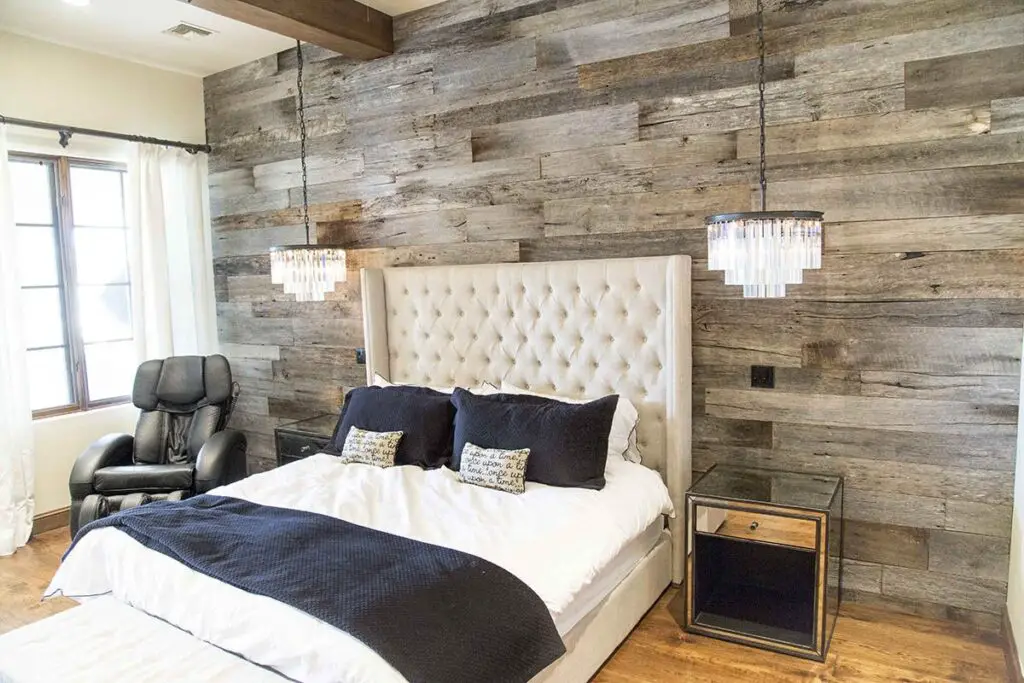
Conclusion
Selecting the right wall to paint as an accent wall is a crucial decision that can greatly enhance the visual appeal and atmosphere of any room. Throughout this guide, we’ve explored the various factors and considerations that should inform your choice. From room size and layout to lighting, color theory, and the mood you wish to convey, each element plays a significant role in the final outcome.
Remember that there is no one-size-fits-all answer to the question of which perfect accent wall to accentuate. It ultimately depends on your unique preferences, the existing decor, and the specific goals you have for your space. Whether you opt for a bold and dramatic statement wall or a more subtle and harmonious approach, your decision should reflect your personal style and the ambiance you desire.
Additionally, don’t forget the power of experimentation and creativity. Paint is a relatively inexpensive and easily changeable design element, so feel free to try different walls until you achieve the desired look. Trust your instincts and let your creativity flow.
In the end, the accent wall serves as a canvas for self-expression, allowing you to infuse your personality and creativity into your living spaces. So, take the knowledge and insights gained from this guide, and embark on your journey to transform your home one wall at a time. Your newly painted accent wall will be a testament to your design prowess and a source of pride and enjoyment for years to come.



